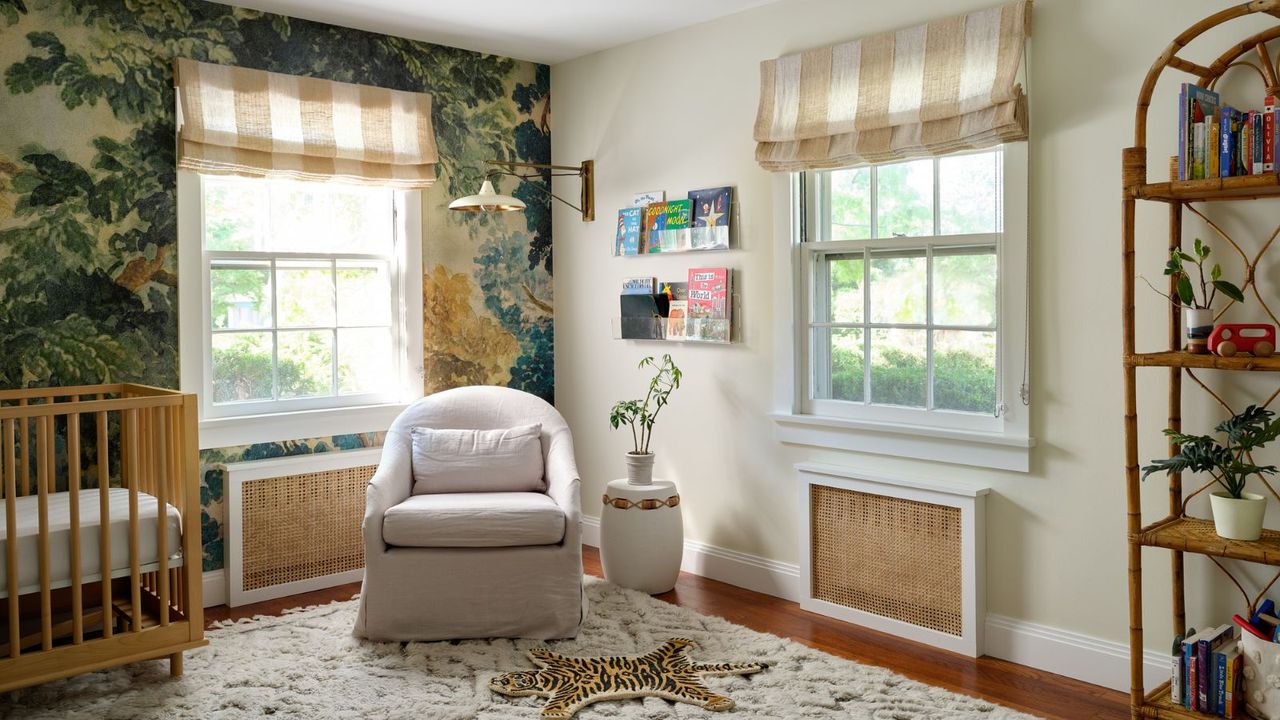
With so much freedom to play with pattern, personality, and palette, it’s easy to feel overwhelmed by kids' room paint ideas.
The good news is, kids' rooms are a great place to be a bit braver with color. It's not about following color trends, but about creating a space that sparks imagination and joy with a variety of paint ideas that reflect their personality, while also being functional and calming when needed. A tough brief.
But that doesn’t mean you should throw the whole swatch book at the wall. Whether you’re designing a nursery or updating a room for an older child, the key lies in a well-thought-out color strategy.
To help, we’ve gathered the most creative ways to use color in a kids' room – from paint to wallpaper to carefully chosen accents –along with expert tips to guide your design decisions and hopefully, please your little ones in the process.
13 kids' room paint ideas to add color and joy to their bedroom
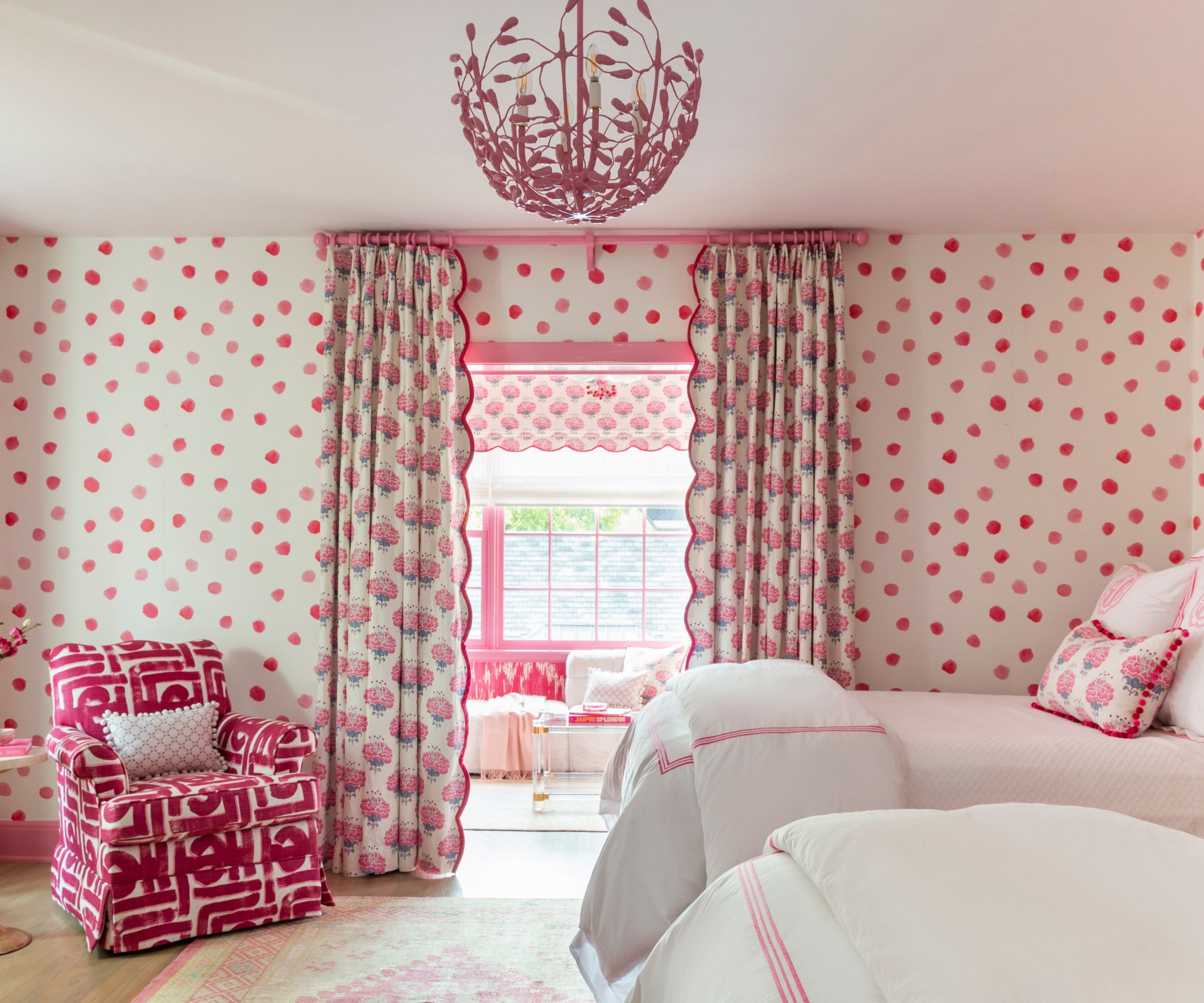
'Designing for children is about so much more than color. It’s about creating a world,' says interior designer Nina Lichtenstein. 'A space that reflects who they are now, while leaving room for who they’re becoming. The best children’s rooms balance creativity with calm, whimsy with function, and most importantly, age-appropriate style with lasting appeal.'
'Color plays a central role in setting the tone. But forget the dated rules about pink bedroom ideas for girls and blue for boys. Today’s children’s rooms are palettes of possibility, built around emotion, imagination, and a modern understanding of how color impacts mood, focus, and sleep.'
When it comes to kids' room paint ideas, there are lots of different approaches. To find out how to choose the perfect paint shade, design, and style, and avoid cliché kids' bedroom mistakes, we have gathered our top tips from the experts below.
1. Start your scheme with a focal point
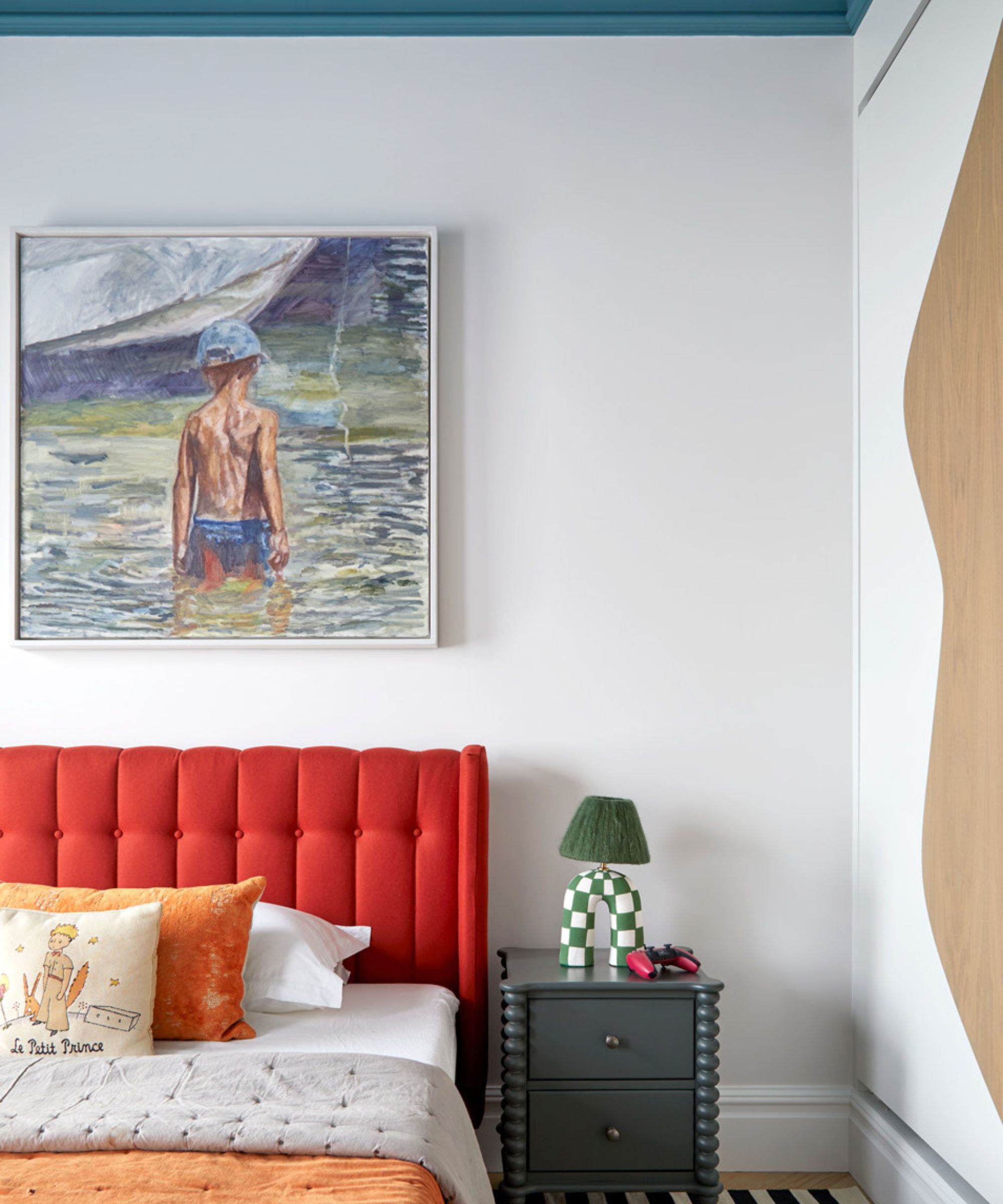
When designing a kid’s room, starting with a strong focal point can help anchor your entire color scheme.
'Stuck for inspiration and looking to introduce some color? The secret lies within the cherished pieces you already own,' says Joanna Landais, designer and founder of Eklektik Studio. 'Build your room's palette around one standout artwork, allowing it to shine as the focal point.'
'For a surefire win, choose shades directly from the artwork itself. Want to elevate the design even further? Add an unexpected pop of color to create a vibrant and playful atmosphere. This technique, often seen in adult spaces, is equally effective and exciting for children's interiors.'
2. Opt for a timeless, neutral base
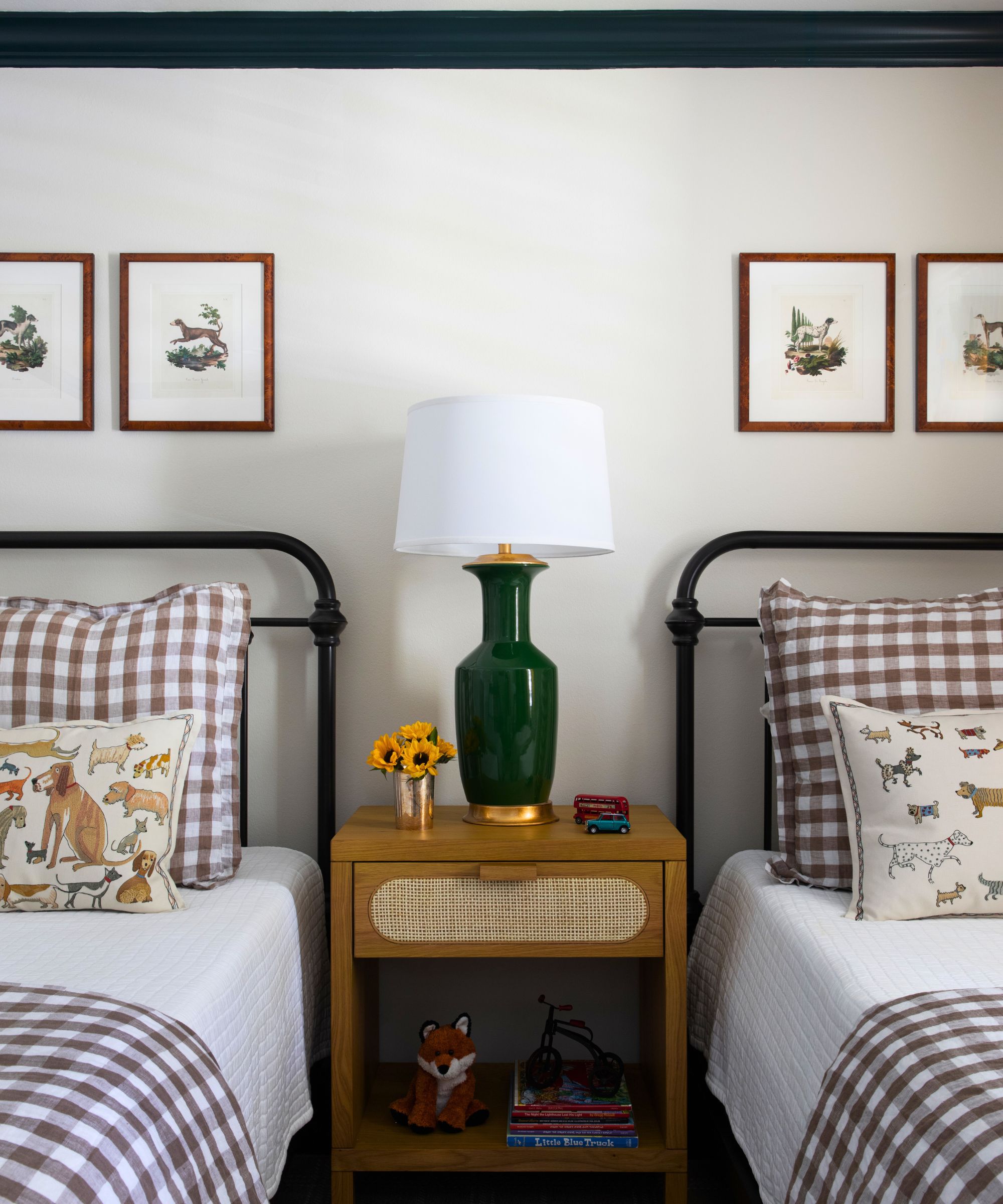
'When I design a kid’s room, I like to create a space that will evolve with the child as they grow. Because of this, I tend to opt for a palette with warm neutral hues or softened versions of classic colors, like sage green and light blue,' advises designer Kathy Kuo.
'This creates a timeless base that can easily be layered with more playful elements like patterned textiles, whimsical artwork, and sculptural lighting,' she adds.
A favorite for designers and experts alike, decorating with neutrals is a versatile choice that can stand the test of time, effortlessly integrating into both classic and contemporary interiors.
3. Use the 60-30-10 rule to add pops of color
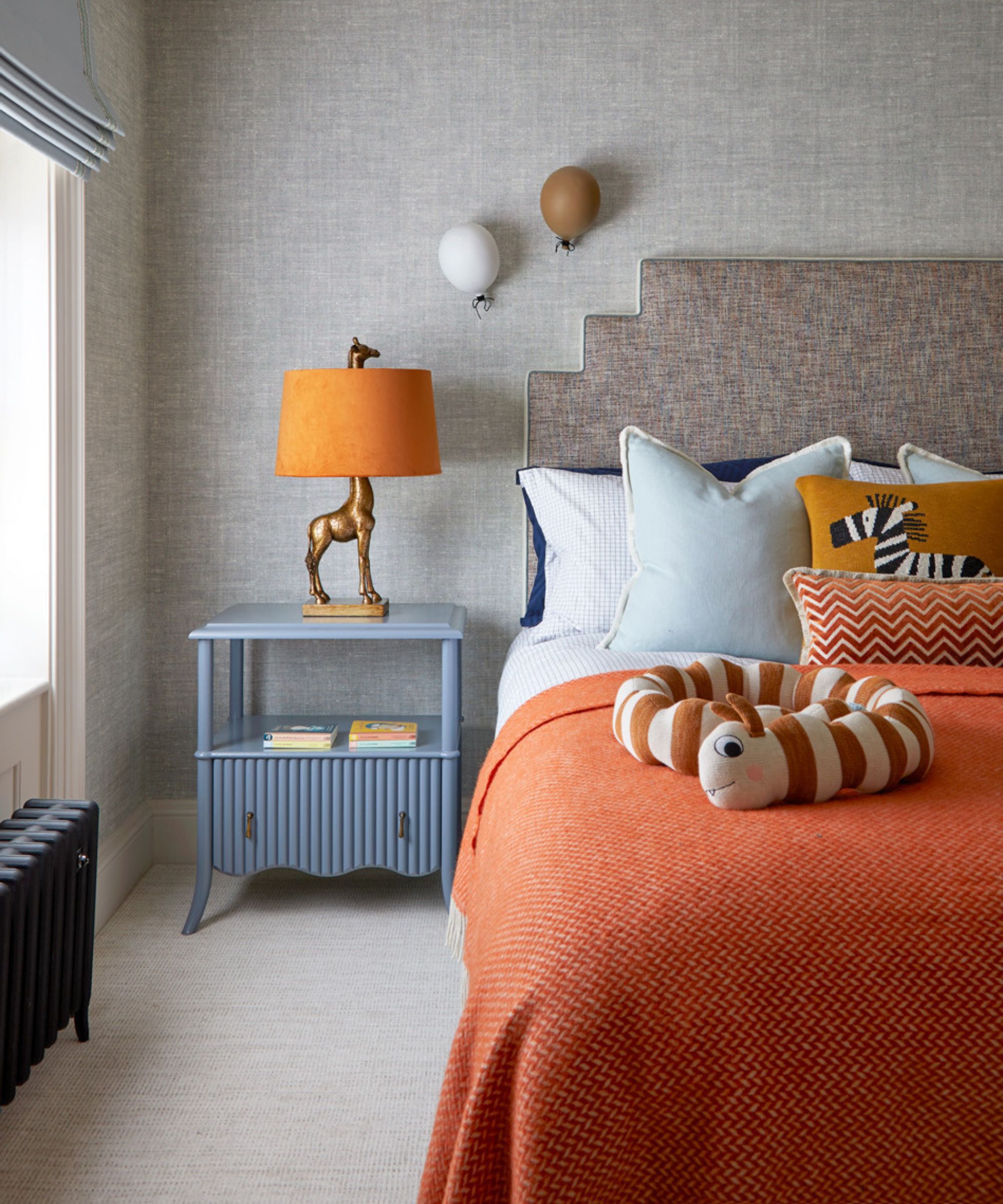
Joanna Landais, who is a dedicated children's room designer, also encourages you to look to the 60-30-10 rule to help with your decorating formula.
'Aim for a dynamic balance: dedicate 60-70% of the room to a neutral background. This creates a calm environment where your child can relax,' she explains. 'Then, introduce 30% of a complementary second color and just 10% of your most daring hue. This careful distribution ensures a playful yet thoughtfully curated look that ignites imagination without overwhelming the space.'
'And remember, don’t feel confined to accessories for your pops of color! Think outside the box; you can make a bold statement by painting a small accent wall or even the ceiling in your favorite shade.'
4. Try a grounding blue hue
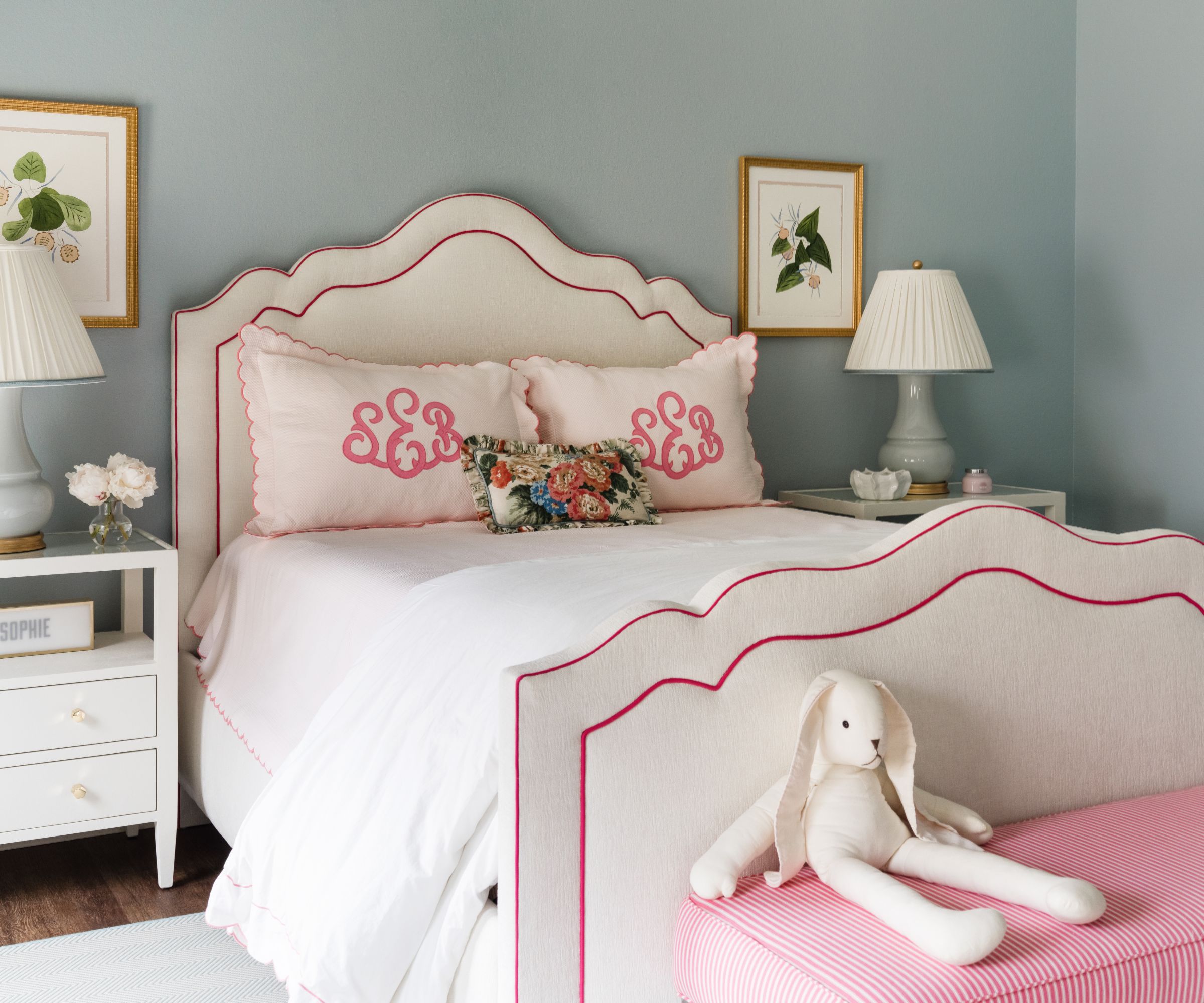
While often associated with bedroom ideas for boys, blue is far more versatile than its stereotypes suggest. From soft sky tones to deep inky navy, blue can act as a surprisingly grounding base color in any child’s room – bringing calm, warmth, and timeless appeal.
Sherrell Neal, founder of Sherrel Design Studio and designer of the serene space above, says: 'Blue has always been a universal choice that fits every age. Farrow & Ball’s No. 27 Parma Gray worked beautifully in a young girl’s room that’s sophisticated enough to grow with her.'
'We’ve also considered soft greens, warm blush tones, and even ochre for a playful but grounded palette that evolves over time. The key is choosing colors that reflect personality while allowing room to mature.'
5. Pink and brown makes a soft, nostalgic combo
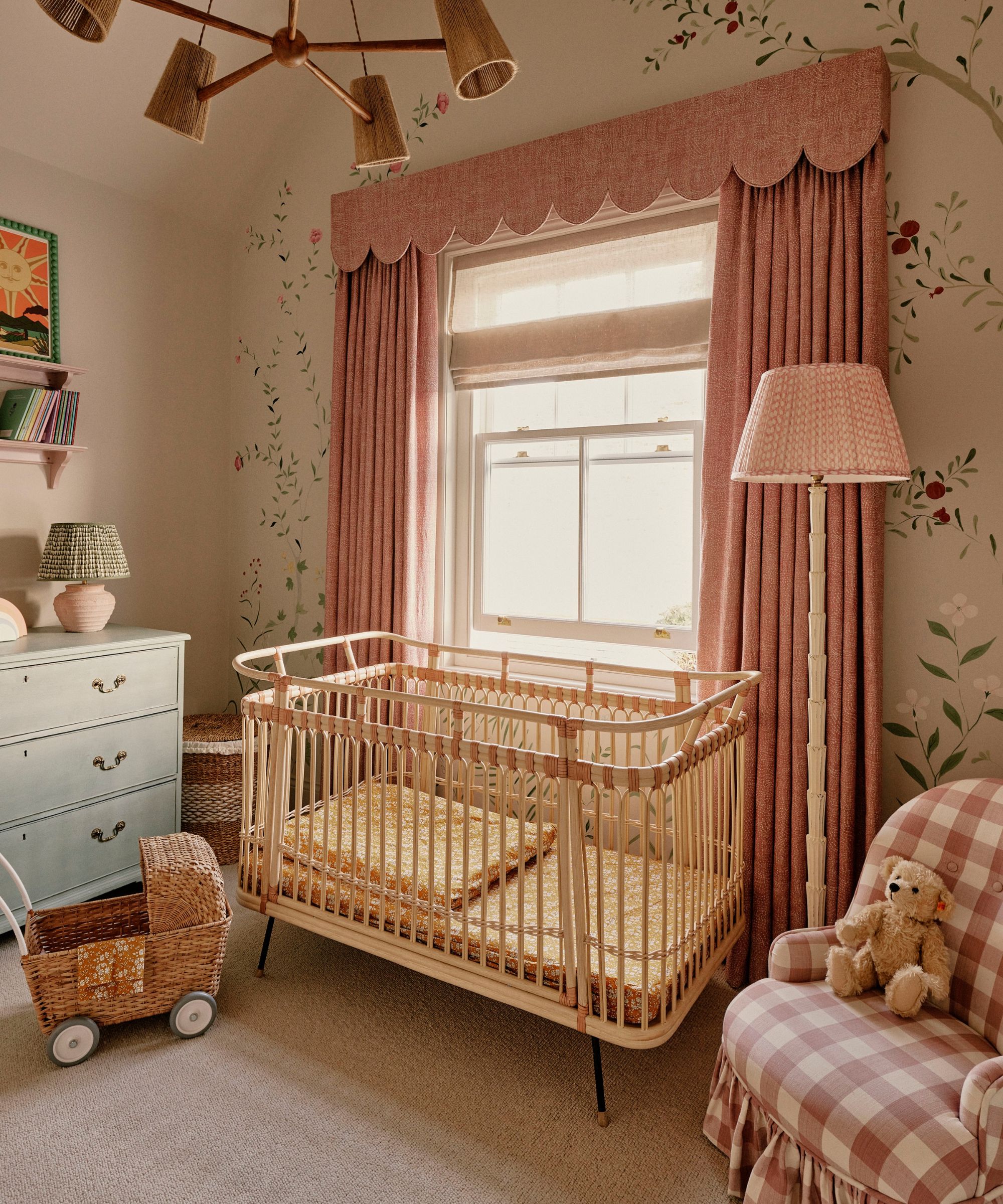
Pink and brown might feel like an unexpected color combination for a kids’ room, but together they create a warm, nostalgic palette that feels both comforting and unexpectedly chic.
'Right now I’m loving a brown-and-pink palette,' suggests Kailee Blalock from House of Hive Design Co. 'It has a nostalgic early 2000s interior design vibe. Think soft mocha paired with blush or rich chocolate with light pink. It’s also a palette that can grow with the child: start with playful patterns when they’re young and transition to more neutral, textured accents as they age. Layering in natural materials like rattan or linen can balance the sweetness of the colors and give the room longevity.'
You can also achieve the same soft combo with blush and burnt umber, designer Nina Lichtenstein suggests. 'Blush brings softness and light while the burnt umber introduces a sense of structure and age. Imagine blush walls with dark wood furniture and terracotta accents.'
6. Get creative with the ceiling
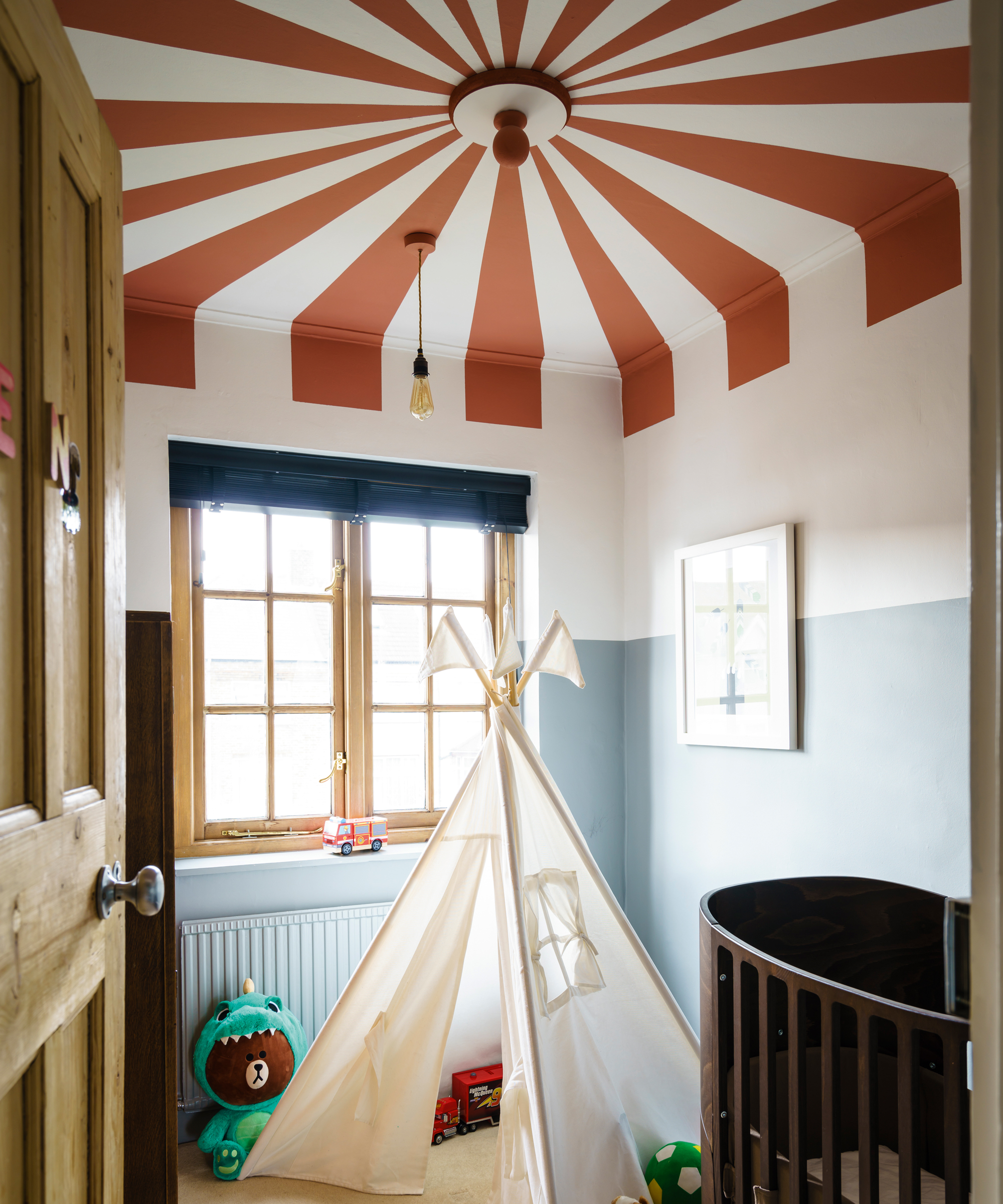
Often dubbed the 'fifth wall', the ceiling is one of the most underused opportunities in kids' room design – and an accent ceiling can make a big impact when used thoughtfully.
As they drift off to sleep, the bedroom ceiling is likely the last thing your child will see before entering the land of nod, so give them something to dream about. A statement ceiling can come in all shapes and sizes, from a stencilled starry night to wallpapered maps of the world. But a simple wash of color will also work wonders, too.
In this room above, the bedroom becomes the big top, thanks to a simple but transportive design that uses small bedroom ideas for kids to turn a compact space into a circus.
7. Spark joy with soft yellow
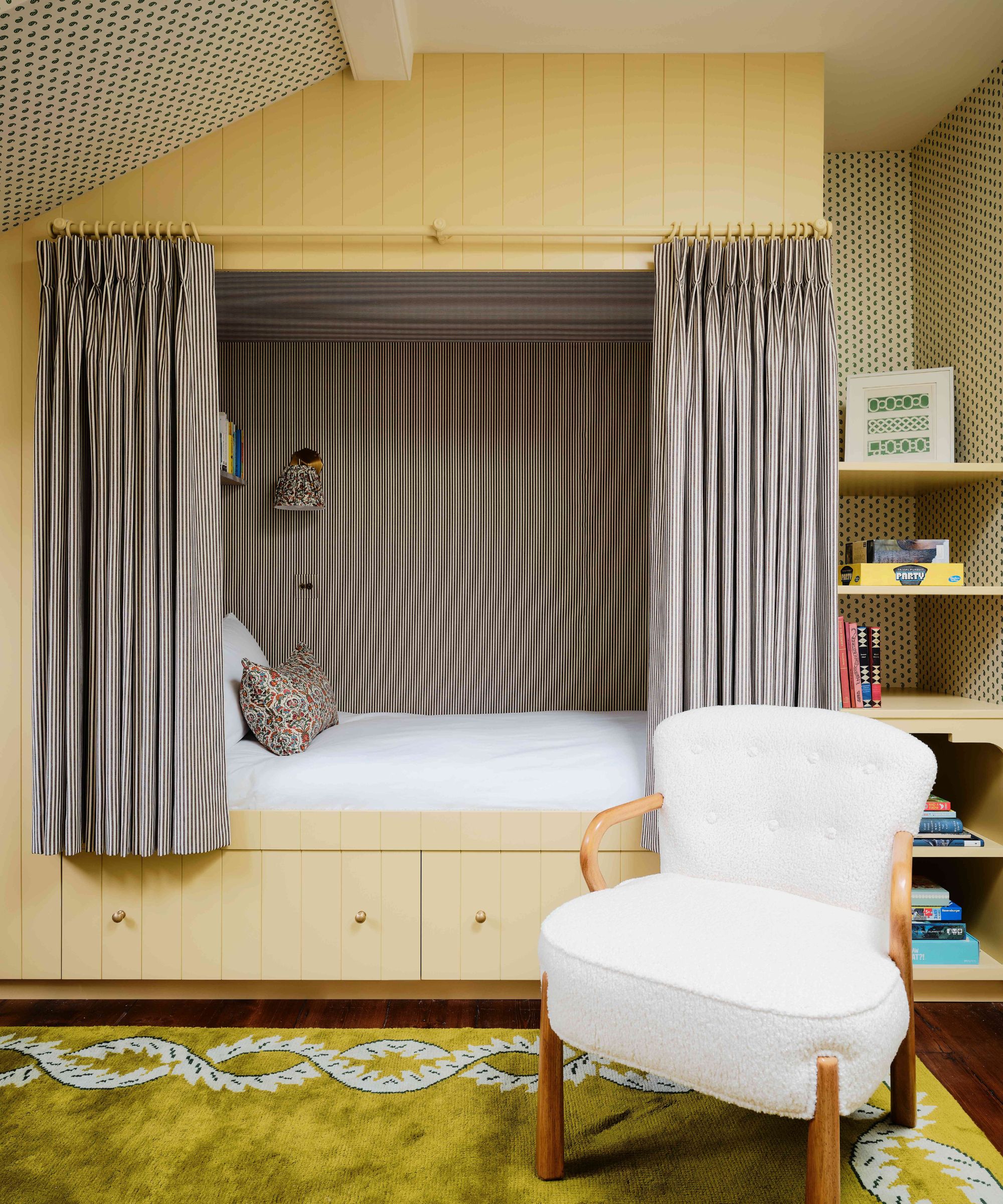
Associated with optimism, yellow bedroom ideas are lovely for a kids' room, what's more, it is also a hugely versatile shade, making it a popular choice for gender neutral schemes.
'Yellow represents hope, happiness, and positivity, but it’s also a lively and vibrant pigment, which makes it perfect for a children’s bedroom,' says Dominic Myland, founder of Mylands Paints.
When selecting yellow paint shades, be sure to think about the light in the room, says Dominic. ‘As with any pigment, natural light will affect how your color choice looks in a room, so I’d always recommend painting a sample onto the different walls in a room so you can see how it will look in different lights throughout the day.'
8. Paint the trims in a contrasting hue

'Don’t forget to consider the base boards and woodwork in your scheme too, these can be harmonious, an all-over treatment or contrasting to suit the mood,' says Ruth Mottershead, creative director at Little Greene.
If you’re looking for a subtle but high-impact way to bring color into a kids’ room, painting the trims in a contrasting hue is a clever move. Woodwork like baseboards, window frames, doors, and moldings can become a playful design feature, especially when contrasted with softer wall tones.
Seen here in the above nursery, the design team at Creative Tonic Design chose to highlight the trims in this serene reading corner with a verdant green hue that complements the sky blue walls and picks out the tones of the leafy, pattern drenched chair and drapes pairing.
9. Try out a two-tone look
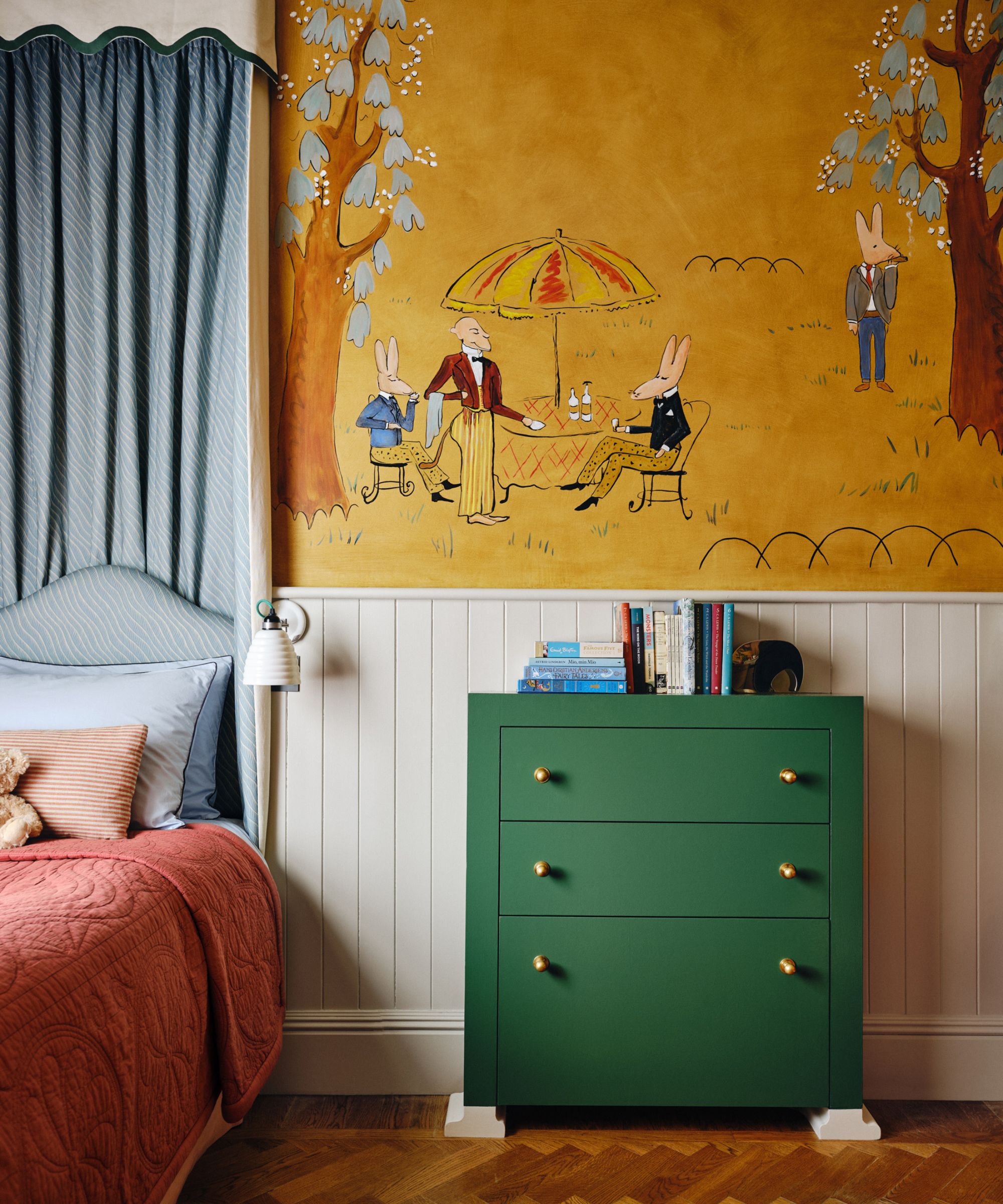
Perfect for kids' rooms, color blocking and two-tone paint techniques can bring dimension and playfulness.
By dividing the wall horizontally, you can ground the space with a deeper shade on the bottom half and keep things airy above, or flip the contrast for something more unexpected. It’s a technique that works beautifully with paneling or molding, but it can also be achieved with just paint and painter’s tape.
Additionally, bedroom wallpaper can be added above panelling or moldings to make a statement, like in this children's bedroom designed by Beata Heuman.
10. Refine the rainbow with pastels

Rainbow color schemes are a natural go-to for kids’ rooms – but that doesn’t mean they have to be overly bright or chaotic. By softening the spectrum with a pastel color scheme, you can achieve a more refined, soothing version of the look that still feels joyful and full of personality.
'When it comes to creating a dreamy bedroom for your child, why not make the most of their wishes? But instead of resisting a rainbow theme, refine it,' suggests Joanna. 'Opt for calming pastels that echo the beauty of rainbows without overwhelming the senses. Think soft blues, gentle pinks, and delicate yellows; these colors will create a harmonious atmosphere while still honoring their request.'
‘If you’re decorating a child's room, paler colors tend to be more calming and soothing – both for the child and parents,’ adds Judy Smith, color consultant at Crown. ‘A background of pastel yellows, soft blues, aqua greens, and warm pinks can be a good basis from which to add more color. You can always add brighter tones on top of these colors in stripes, squares, or a whole painted bedroom accent wall to inject a bit more fun as your child grows.’
11. Add a mural wall for impact
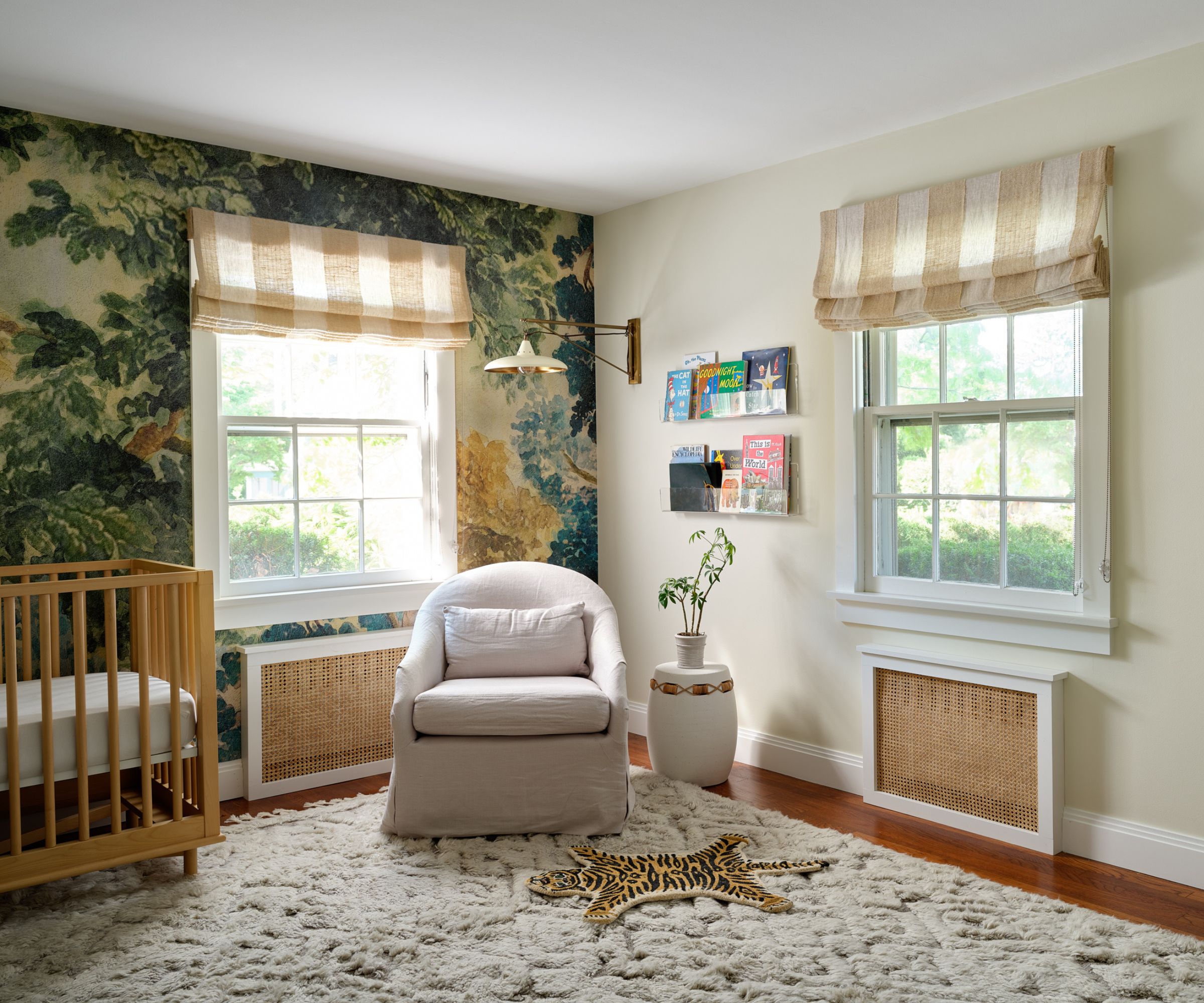
If you're looking to create a real wow moment in a child’s room, a wall mural is a bold but effective way to do it.
Whether it’s hand-painted, wallpapered, or done using wall decals, a mural can instantly bring storybook charm, imagination, or a sense of adventure into the space – and serve as the inspiration for the rest of your color scheme.
As seen in this neutral nursery by Amy Courtney Design, the watercolor-style mural is the perfect way to add color to this nursery. The leafy design adds a strong visual anchor, so everything else in the space, from paint colors to decor, can be chosen to complement it.
12. Zone areas with color

When thinking about paint colors for a kids' room, consider what the different areas of the room will be used for and choose a paint to fit the mood. This will help bring identity to the different areas.
‘Paint is a fantastic tool too for zoning spaces, creating an area for play, a calming and sophisticated area for homework, or a gentle, relaxing space for sleep,’ explains Ruth Mottershead. ‘Vivid hues work well in more vibrant areas that see a lot of activity,' she adds.
This technique works particularly well with a recessed desk area or in playrooms for storage, like the custom design in this room. By painting this section of the room a more stimulating hue than the rest, you’ll make the area feel special and more exciting – and they might spend more time there than you expect.
13. Use soft furnishings to perfect the palette
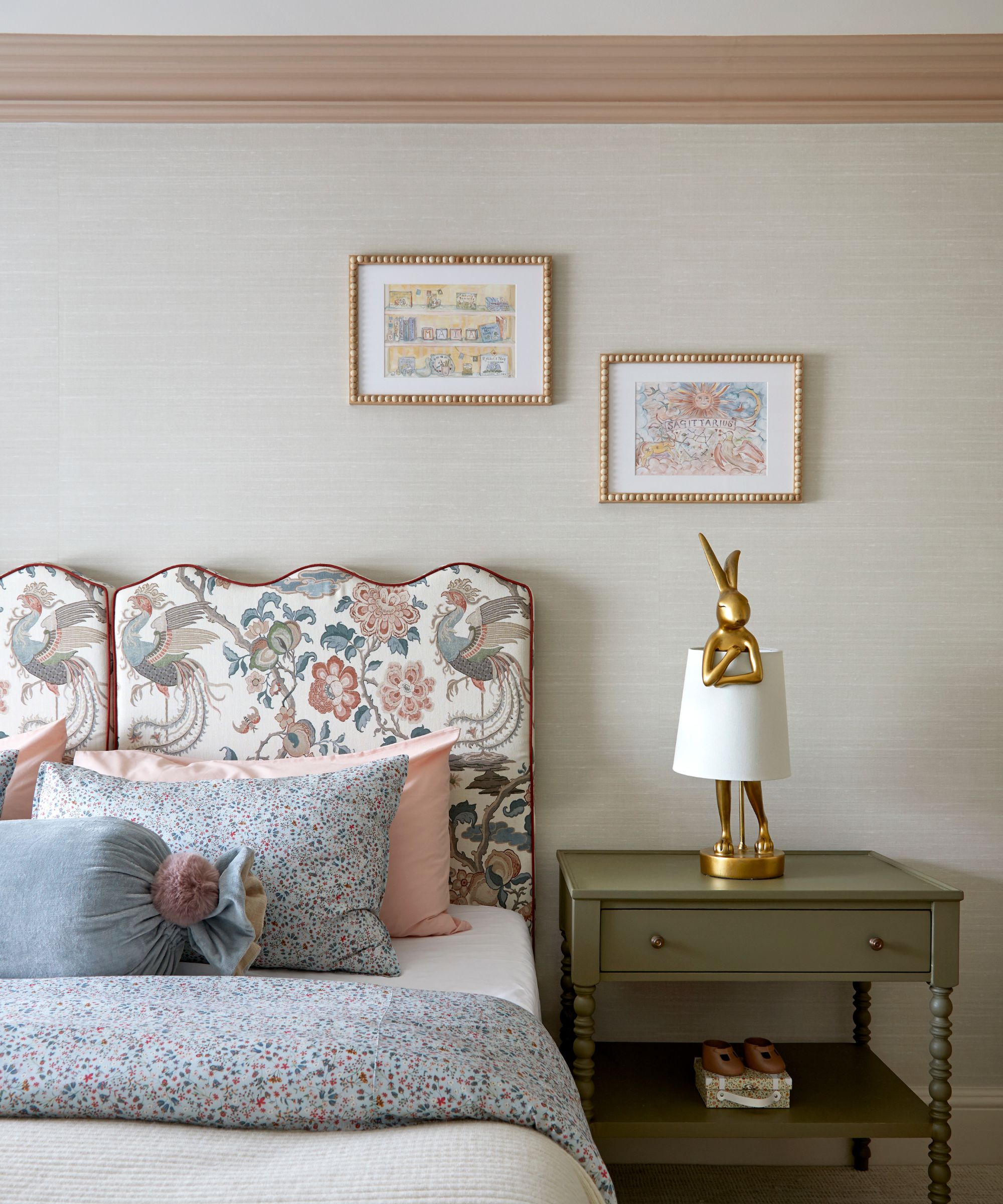
Once your walls are painted and your key colors are chosen, soft furnishings are where your palette really comes to life. Bedding, rugs, curtains, cushions, and lighting choices offer the perfect opportunity to reinforce your chosen hues (or introduce subtle contrast) without committing to more permanent design elements, meaning you can switch them out as they grow.
'Remember, there's a vibrant world beyond just wallpaper and paint,' says Joanna. 'Soft furnishings play a crucial role in creating inviting and imaginative spaces. Think patterned headboards or whimsical curtains as your design foundation.'
'Start with a beloved fabric to set the stage, and let its colors inspire a cohesive palette throughout the room. Introduce those hues in playful accessories and paint, ensuring a harmonious flow from floor to ceiling.'
What is the best color to paint a child’s bedroom?
There is, of course, no one color that triumphs over all others – a room color’s success is entirely down to the individual child, their likes and dislikes, your personal interior style, and the architectural qualities of the room itself.
If you want to create a calming environment or are looking for nursery room ideas, then paler, softer tones are best.
For older children, consult them on their favorite colors. If they love bold colors, then embrace it – but if it feels like too much to paint the whole room in the bright shade they picked out, then consider pairing it with more muted tones in the form of children's bedroom wallpaper, a simple mural, or feature wall. You could also use that color as an accent throughout the furnishings and wall art, with a neutral base underneath.
'There are two ways to consider color for a child’s bedroom, one of reserved calm and tranquillity or, for much more fun, a joyful flourish of expressive creativity,' says Patrick O’Donnell, brand ambassador at Farrow & Ball. 'The former is probably the desire, but your child will appreciate some artistic exuberance, and what is more, you can even get them involved in the process.'
What paint should I use in a kids' bedroom?
It’s also not only important to consider the color of the paint, but the qualities of it too in relation to how the room will be used. Washable emulsions are a necessity for kids who love making art in their rooms, while hardy floor paint is essential if your child loves to run around.
‘We all know that children’s bedroom and playroom ideas need to factor in some wear and tear, so choosing the right finish when considering kids' room paint ideas is vital’, adds Patrick.
‘For walls, choose finishes like our Modern Emulsion, which is washable and wipeable for accidental disasters that strike. For woodwork, resilience is key, so our super hard-wearing Modern Eggshell will fit the bill, from all your woodwork to bedroom furniture, and is even tough enough for painted floorboards.’
Finally, consider how their tastes are likely to change, and plan accordingly. If they love one particular color, choose a shade or tone that is more likely to grow with them for a few years in the future.







